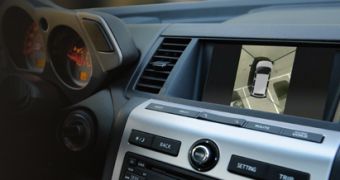As cars become “smarter” and more advanced, the need for various solutions that will allow drivers (or even the car itself) to check out their surrounding environments becomes more dire, and for this reason, Xilinx and OmniVision have partnered for the development of a four camera, 360-degree surround view automotive reference design. The Xilinx reference design highlights the advantages of megapixel resolution sensors over VGA-based systems for extreme wide-angle field of view applications, such as greatly improved image distortion correction and stitching. The design makes use of OmniVision's OV9715 automotive-grade megapixel sensor, that has been specifically designed to meet the stringent requirements of the automotive and sensing applications markets and improves on obstacle and pedestrian detection by capturing more detailed scene information. The OV9715 is a 1/4-inch sensor providing full-frame, sub-sampled or windowed 8-bit/10-bit images in RGB RAW format via the digital video port. The sensor offers complete user control over image quality, formatting and output data transfer, while the OV9715 incorporates image processing functions, including exposure control, gain control, white balance, lens correction and defective pixel correction. The OV9715 uses a 3-micron OmniPixel3-HS pixel to achieve best-in-class low light sensitivity of 3300 mV/lux-sec, a feature that allows the OV9715 to operate in virtually any lighting condition, making it popular for use in automotive vision and sensing systems. "360-degree view systems, obstacle detection and many other advanced driver assistance applications requiring megapixel resolution sensors are gaining widespread acceptance in the automotive market," said Jeff Morin, senior technical product manager for North American automotive products at OmniVision. "This trend is reflected in projections from market research firm Techno Systems Research Co., Ltd., which indicate that megapixel sensors for the automotive market are expected to jump from 1.3 percent market share in 2010 to nearly 35 percent market share by 2014," added Mr. Morin.
hot right now

 14 DAY TRIAL //
14 DAY TRIAL //